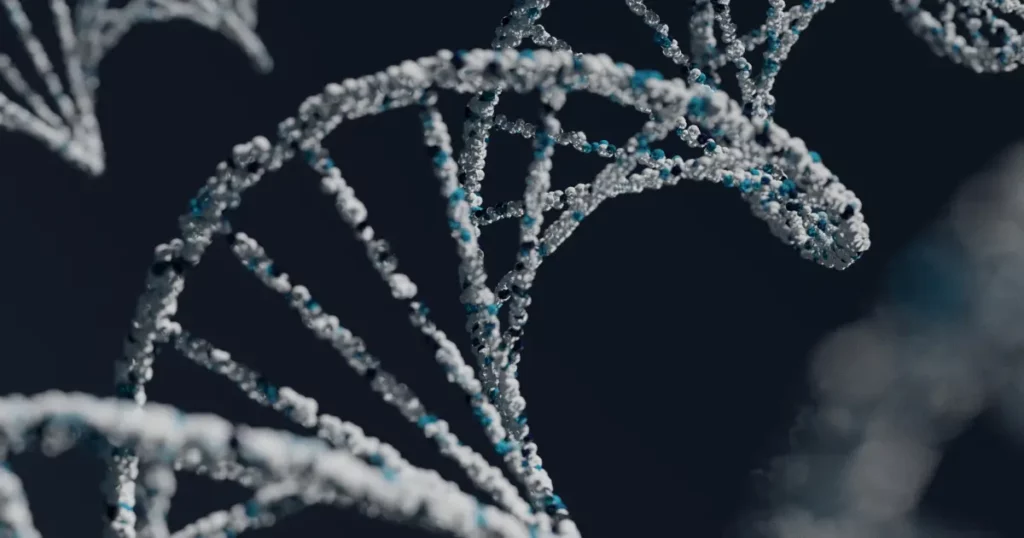Researchers from the University of Washington and the Howard Hughes Medical Institute use an innovative…

The Power of PROTAC for Cancer Treatment
In the relentless pursuit of more effective cancer treatments, scientists have turned to innovative strategies that go beyond traditional approaches, i.e. inhibitors. One such breakthrough is the development of Proteolysis Targeting Chimeras, or PROTACs. These small molecules have the potential to transform the landscape of cancer therapy by targeting specific proteins for degradation.
Creative PEGWorks specializes in advanced functional polymer products, with a focus on the manufacturing of derivatives and reagents of polyethylene glycol, polysaccharides, and polyamino acid. To keep up with the research needs of the universities, federal laboratories, and biotechnology and pharmaceutical companies we supply, we stay up to date on the latest developments like PROTAC development. Here, we will explore what PROTACs are and how they are poised to revolutionize cancer treatment.

Table of Contents
Understanding PROTACs
Proteolysis Targeting Chimeras, or PROTACs, are small molecule compounds that represent a novel class of therapeutic agents designed to target and degrade specific proteins within cancer cells. The name “PROTAC” is a combination of “proteolysis” and “targeting chimeras,” reflecting their mechanism of action. Unlike traditional drugs that primarily inhibit or block the activity of a protein, PROTACs harness the cellular machinery to degrade the target protein.
According to Békés, Langley, and Crews: “In the 20 years since the concept of a proteolysis-targeting chimera (PROTAC) molecule harnessing the ubiquitin–proteasome system to degrade a target protein was reported, TPD has moved from academia to industry, where numerous companies have disclosed programmes in preclinical and early clinical development. With clinical proof-of-concept for PROTAC molecules against two well-established cancer targets provided in 2020, the field is poised to pursue targets that were previously considered ‘undruggable’.” [1]
PROTAC Structure
The basic structure of a PROTAC molecule consists of three key components:
1. Target Protein Binder
One end of the PROTAC binds to the target protein of interest. This binding event triggers the recruitment of the target protein into a larger complex.
2. E3 Ligase Binder
The other end of the PROTAC binds to an E3 ubiquitin ligase enzyme. E3 ligases play a crucial role in tagging proteins with ubiquitin, a small protein that marks proteins for degradation by the cell’s proteasome.
3. Linker Molecule
A flexible linker connects the two binding ends, allowing the target protein and E3 ligase to come into close proximity. PEG linkers have been playing critical roles in linking the E3 ligase binder and target protein binder to form structurally unique yet required for efficient and rapid degradation.
The unique aspect of PROTACs is their ability to bring the target protein and E3 ligase together, facilitating the transfer of ubiquitin molecules to the target protein. Once ubiquitinated, the target protein is recognized and degraded by the cell’s proteasome, effectively removing it from the cellular environment.
Benefits of PROTACs in Cancer Treatment
These innovative molecules have gained considerable attention for their unique ability to harness the body’s natural protein degradation machinery to selectively eliminate cancer-causing proteins. The compelling benefits of PROTACs and their potential to revolutionize cancer therapy are numerous.
Precision Targeting
PROTACs are highly selective and can be designed to specifically target cancer-causing proteins or those critical for cancer cell survival. This precision reduces the risk of affecting healthy cells, minimizing side effects.
Overcoming Drug Resistance
Cancer cells can develop resistance to traditional therapies, but PROTACs offer a new approach. By degrading the target protein rather than inhibiting it, PROTACs can bypass resistance mechanisms. Li, Liu, Yang, Li, Gao, and Tan explain: “Many targets that cannot be regulated by small molecules or antibodies can be affected by PROTAC technology. Unlike the traditional role of small molecule drugs which aim to block or inhibit the function of proteins, the novelty and usefulness of PROTAC is its ability to send any target proteins into the proteasome for degradation.”[2]
Broader Range of Target Proteins
PROTAC technology can target a wider range of proteins, including those previously considered “undruggable” using conventional approaches.
Potential for Combination Therapies
PROTACs can be used in combination with other treatments, such as chemotherapy or targeted therapy, to enhance their effectiveness.
Reduced Treatment Duration
PROTACs may allow for shorter treatment durations, as they can achieve rapid degradation of target proteins.
Clinical Progress and Future Prospects of PROTACs
While PROTACs hold immense promise, their development is still in its early stages. Several PROTACs are currently undergoing preclinical and clinical trials for various cancer types. The results from these trials will provide valuable insights into their safety and efficacy.
As researchers continue to refine PROTAC design and better understand their mechanisms of action, it is likely that these innovative molecules will become an integral part of the arsenal against cancer. By offering a more precise and adaptable approach to targeting cancer-causing proteins, PROTACs have the potential to reshape the future of cancer treatment, offering hope to patients and clinicians alike.
Final Word: PROTAC for Cancer Treatment
Sakamoto summarizes the benefits of PROTAC for cancer treatment: “Protacs provide an entirely new nanotechnology-based approach to target cancer-causing proteins for ubiquitination and degradation. Experiments over the past decade have demonstrated that Protacs are specific, versatile, and biologically active to induce degradation of proteins that promote tumorigenesis and inhibit the growth of cancer cells.”[3]
At Creative PEGWorks, we specialize in the research, manufacturing, and distribution of advanced functional polymer products. Located within North Carolina’s Research Triangle Park, we supply some of the nation’s leading colleges, companies, and researchers with the latest in the field of biochemistry. For more on our products, contact us today.
References
1. Békés, M., Langley, D.R. & Crews, C.M. PROTAC targeted protein degraders: the past is prologue. Nat Rev Drug Discov 21, 181–200 (2022). https://doi.org/10.1038/s41573-021-00371-6
2.Li R, Liu M, Yang Z, Li J, Gao Y, Tan R. Proteolysis-Targeting Chimeras (PROTACs) in Cancer Therapy: Present and Future. Molecules. 2022;27(24):8828. Published 2022 Dec 12. doi:10.3390/molecules27248828
3. Sakamoto KM. Protacs for treatment of cancer. Pediatr Res. 2010;67(5):505-508. doi:10.1203/PDR.0b013e3181d35017
Related Posts
- Designer Proteins Trigger Cell Death - a new cancer therapy?
- High-Density Lipoprotein Mimetic Drug Delivery Systems for Cancer, Cardiovascular Diseases
Nanolipoprotein particles (NLPs), which are mimetics of naturally occurring high-density lipoproteins (HDLs) present in the…
- PEGfilgrastim (Neulasta) Approved for Treatment of Acute Radiation Syndrome
In November 2015, the Food and Drug Administration approved the use of Amgen’s pegfilgrastim (Neulasta)…
